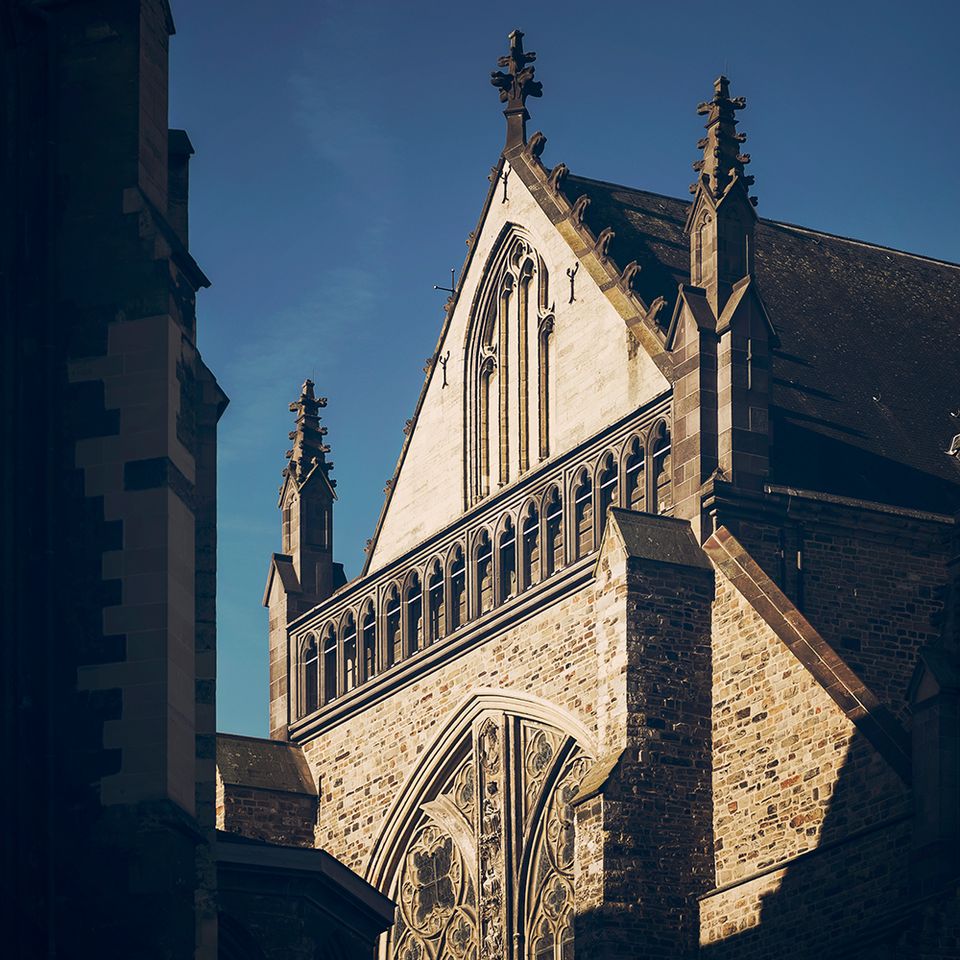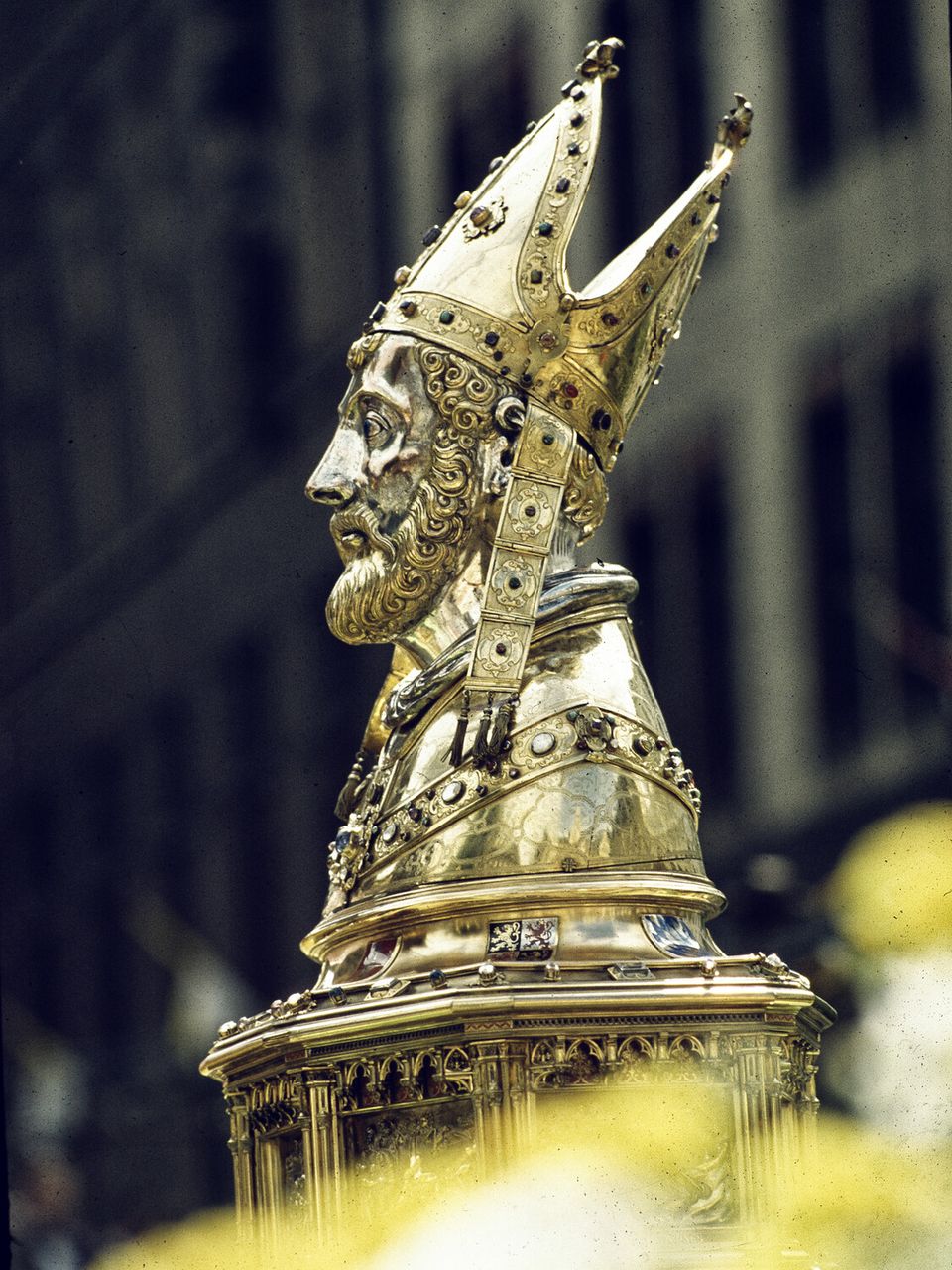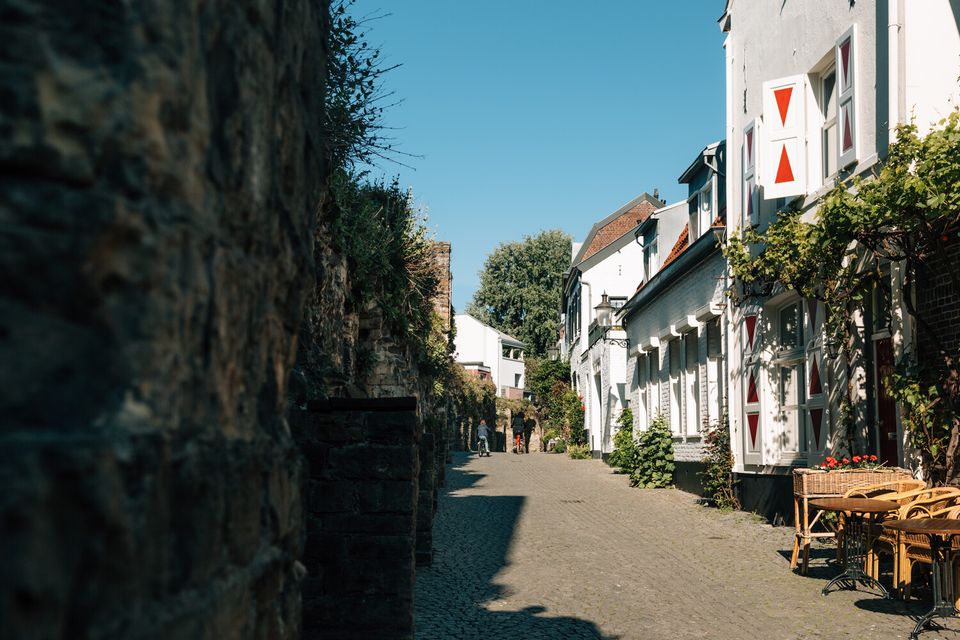A wunderschön walk through ‘German’ Maastricht
Maastricht doesn’t feel like the rest of the Netherlands. Whether it’s because of the special architecture, the joie de vivre, or the unique dialect: it is and will always be a unique city. And although it’s often described as the ‘Petit Paris’, it also has some German influences. Want to know how the German-Roman Emperor Charlemagne is connected with Maastricht? City guide at Explore Maastricht Tanja Olivers and former guide Miriam van Dyck will take you out and about. Los geht’s!
Truly European
It may not be the first thing you think of, but Maastricht is the European city par excellence, says Miriam enthusiastically. The Treaty on European Union was signed here in 1992, laying the foundations for the subsequent introduction of the euro currency. However, the idea of a united Europe is much older and takes us back to the Middle Ages – to 800, to be precise. At that time, Charlemagne, who later ordered the construction of Aachen Cathedral, was crowned emperor of the Frankish Empire. The Empire covered a large part of Western Europe and was inspired by the Roman Empire, but founded on Christian beliefs. In order to legitimize his power, Charlemagne called upon Saint Servatius, whom he designated as his patron saint. And this is where Maastricht comes into the picture.
The legend of Saint Servatius
Saint Servatius was the first bishop of Maastricht. After his death in 384, several miracles took place that were attributed to him. His grave, situated in a wooden chapel, soon became a pilgrimage site and eventually served as the foundations of the current St Servatius’ Basilica, located on Keizer Karelplein – not surprisingly, this translates as ‘Emperor Charles Square’.
Charlemagne hadn’t chosen just anybody as his patron saint. Saint Servatius continued to serve as a patron saint for many successive German-Roman emperors. A second Saint Servatius church was built in Quedlinburg (Germany) on the eastern border of the empire in honour of this Ice Saint. The empire was literally ‘embraced’ by Saint Servatius.
St Servatius’ Basilica (Sint Servaasbasiliek)
St Servatius’ Basilica is closely linked to Germany both by its history and architecture. Several elements, including the round arches with a red border in the west wing of the basilica, are typically German. The basilica even has an almost identical twin in the German town of Speyer.
The crypt of St Servatius’ Basilica houses several relics and objects dedicated to Saint Servatius, including two must-sees: the bust of Saint Servatius and the ‘noodkist’ (emergency chest), in which the relics of Servaas are stored. Given the cultural importance of this place to Maastricht, you should definitely try to visit the basilica and crypt.
Van Veldeke
But Saint Servatius forms a link with Germany for another reason. The legends about the saint were translated from Latin in around 1170 by Henric van Veldeke, the first famous poet of the Low Countries. As Van Veldeke wrote his Leven van Sint Servaas (‘life of Saint Servatius’) in a mixture of Middle Dutch, Limburgish, and Middle High German, his writings are regarded as the basis of Dutch, Limburg, and German literature. The famous poet has been immortalized as a bronze statue on the Henric van Veldekeplein square, right next to St Servatius’ Basilica and Saint John’s Church (Sint Janskerk). The Limburg dialect society Veldeke and others were named after the poet.
The local dialect: the ‘Mestreechter Taol’
Speaking of Limburgish, one of the characteristics of Maastricht is its dialect, affectionately called the ‘Mestreechter Taol’ (‘Maastricht language’) by the speakers themselves. It’s the most vibrant urban dialect in the Netherlands and also has the oldest and richest written tradition, which more or less goes back to – you guessed it – Henric van Veldeke.
Maastricht is officially considered to be part of ‘Trichterlands’, a sub-group of Central Limburg dialects, but it also has many influences from Standard German and Rhinelandic. For example, the Maastricht word ‘fisternölle’ (to tinker about) originally comes from the Aachen dialect. Other examples of German loanwords are ‘aomzeik’ (‘ant’; Aachen dialect: ‘Omeseeck’), ‘jatse’ (‘to go out on the town’; Rhinelandic: ‘jatzen’) and ‘klasjenere’ (‘to discuss’, ‘to talk’; Rhinelandic: ‘klatschen’). If you want to practise some Mestreechter Taol before you visit, be sure to visit the extensive website of Mestreechter Taol and remember: ‘De Meestreechter taol is vaan us allemaol!’ – ‘Maastricht’s language is for all of us!’
Duitse Poort
A last link with Germany that city guide Tanja points out is the Duitse Poort (‘German gate’). This used to be part of the old city walls, which had several gates. Duitse Poort, also called Akerpoort (‘Aachen gate’) or Wyckerpoort (‘Wycker gate’), was part of the city wall in Wyck and formed the entrance from Aachen. The original gate dated from the 14th century but was rebuilt several times. It eventually became more and more ‘enclosed’ due to more extensive fortifications. Eventually, Duitse Poort was demolished in the middle of the 19th century along with almost all of Maastricht’s other city gates.
Fortunately, much of city wall and the defensive walls was preserved, and you can still walk along the old ramparts in the city park. From there, you can just about see the contours of Sint Servaasbrug bridge, which has been depicted as a privy mark on the €2 coin since 2017. And that takes us back to where we left off: Maastricht is a European city through and through. Auf Wiedersehen!


